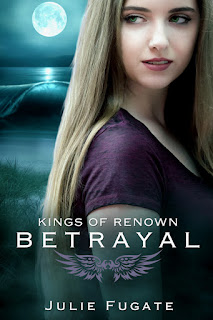Getting Creative About Being Creative, Janice Thompson
In the beginning, creativity flowed!
It’s staggering to think that creativity played a
role from the very beginning of time. It plays a key role in the beginning
stages of our writing, as well. As we dare to think about our futures as
novelists we must face the startling reality that daydreaming—seeing into
unseen worlds—is not only acceptable, it’s critical to our survival. So, peel
back the curtain of your imagination, novelist. Take a glimpse inside. Allow
your eyes to grow accustomed to the kaleidoscope of colors that await you. Take
a few tentative steps toward the characters that beckon you to come and play.
Romp with them. Hide away in their world until you come out carrying their
scent.
Not sure you can do it? Afraid too much time has
lapsed since your last visit to the great unknown? Don’t let that stop you.
Reach for a rag and send those dust bunnies twirling off into space then tiptoe
inside that hallowed territory and spend adequate time dreaming as you did when
you were little. The novelist is only as healthy as his—or her—imagination,
after all. Maybe it’s time yours had a little infusion.
So, how do we tap in? We have to learn to “think”
creatively. Imagine this: You have a computer in your home. It has a really
large hard drive. Much of that hard drive space will never be touched. Think of
the “untapped” creativity inside you the same as you would that “untouched”
portion of your hard drive. It’s time to use that untouched space. It’s time to
think outside the box! It’s time to begin looking for the story inside the
story.
I once did an experiment with my students. I asked
them to take their temperature every two hours over a twenty-four hour period.
According to one theory, we are at our most creative when our body temperature
is the highest. For me, that time is late afternoon/evening. I’m NOT a morning
person. Perhaps you’re just the opposite. Maybe you’re the most
refreshed/creative in the morning.
There’s another theory that we’re also more
creative when we’re relaxed. Perhaps that’s why great ideas come to us while
we’re in the shower. Some of us get our best ideas when we’re “nearly” asleep,
or just waking up. That’s why it’s important to keep a pad and pen on your
bedside table. Might sound crazy, but my laptop goes to bed with me every
night. Well, not actually in bed. But it’s at my bedside all night long, just
in case. Rumor has it that Mary Shelley conceived the idea for her novel Frankenstein during “twilight sleep.” You just
never know when a great idea might hit.
The Five Part Process
According to online site: http://www.ltscotland.org.uk/creativity/section2e.asp,
creativity is a five-part process, which occurs in interconnected phases:
STIMULUS: Could be anything from a picture
to a song to a person’s face. Could be a perceived need or a story. Anything
can stimulate us and cause us to want to act/create. (There are stories all
around us. It’s up to us to find them!)
EXPLORATION: Looking at the
possibilities, the what if’s. Moving beyond the first ideas, considering the
alternatives. (What do you think the author/screenplay writer was really trying
to tell us?)
PLANNING: Gathering information/thinking
about the task (in writing a story, this is usually the point where I begin to
lay out chapters or work off of a plotter or outline). Some people use
diagrams.
ACTIVITY: Let the party begin! Create,
create, create. It’s one thing to talk about the story you’re going to write or
the project you’re going to begin (think home improvement here), it’s another
altogether to strategize, to fly into action. Some of us are all about the
planning and don’t like to get into the actual work of it.
REVIEW: What have I accomplished? Was it
successful? What could be improved next time?
CREATIVITY EXERCISES Let’s get our creative juices
spinning!
#1: TIMED PICTURE TITLES
Locate a piece of art. Set a timer for two minutes
and write down as many titles as you can think of. Once the timer goes off,
look at your title choices. Choose the one that speaks to you. Take it a step
further. Using the title ONLY (not necessarily the picture) create a plotline
for a movie.
#2: FORTUNE COOKIE STORIES
Pop open a fortune cookie and read what’s inside.
Come up with a story idea based on the “saying” you’ve read.
Wrapping Things Up
I hope you’ve enjoyed this journey into creativity.
Who knows. . .you might have the Great American Novel hiding inside of you.
Perhaps, with a little stirring it will rise to the surface. I will leave you
with the words of Mark Twain, who said: You can't depend on your judgment
when your imagination is out of focus.





I like the fortune cookie idea, but it seems like Linda Kozar has already done a whole book on that one. ;)
ReplyDelete